FORMS OF LEARNING IN THE LIGHT OF ARTIFICIAL NEURAL NETWORKS
DOI:
https://doi.org/10.56067/saetauniversitaria.v12i2.424Keywords:
Learning, adhesive learning, aversive learning, artificial neural networks, PISAAbstract
The PISA data allow us to advance the constructivist premise that learning is not the epiphenomenon of teaching. However, it raises the problem of a «pure» investigation of learning and its forms apart from the forms of teaching. In this article we offer an investigation with Artificial Neural Networks. The conclusion is the role in global learning of adhesive or affective learning and the suppression of learning interference, which is related to the neurotransmitters serotonin and acetylcholine, respectively, and the reverse function of aversive or defensive learning, related to norepinephrine or noradrenaline.
Downloads
References
Adorno, Theodor W. (2015): Lecciones sobre la Crítica de la razón pura. Buenos Aires: Las Cuarenta.
Arnold, Rolf; Holzkamp, Klaus (2009): «Sobre el “cortocircuito enseñanza-aprendizaje”. Entrevista sobre el “aprendizaje”». Revista de Sociología de la Educación-RASE, 2 (1): 86-94.
Arnold, Rolf; Schön, M. (2021): Didáctica facilitadora. Un libro de aprendizaje. València: Institut de Creativitat i Innovacions Educatives de la Universitat de València.
Blokland, Arjan (1995): «Acetylcholine: a neurotransmitter for learning and memory?». Brain Research Reviews, 21 (3), 285-300 < https://doi.org/10.1016/0165-0173(95)00016-X> DOI: https://doi.org/10.1016/0165-0173(95)00016-X
Comenius (1659): Johan Amosi Comenii Schola Ludus, seu Encyclopaedia viva: hoc est Praxis Scenica Januaelingvarum & Rerum, Artificium exhibens amaenum... Typis Jacobi Lasché, Typografhi Hanoviensis.
Dausien, Bettina (2011): «“Biographisches Lernen” und “Biographizität” - Überlegungen zu einer pädagogischen Idee und Praxis in der Erwachsenenbildung». Hessische Blätter für Volksbildung, 2, 110-125. DOI: https://doi.org/10.3278/HBV1102W110
Hasselmo, Michael E. (1993): «Acetylcholine and Learning in a Cortical Associative Memory», Neural Computation, 5 (1), gener, 32-44 DOI: https://doi.org/10.1162/neco.1993.5.1.32
–––––– (2006): «The role of acetylcholine in learning and memory», Current opinion in Neurobiology 16 (6), 710-715. DOI: https://doi.org/10.1016/j.conb.2006.09.002
Hernàndez, F. J.; Garcia, Vicent (2022): Sobre el lenguaje escrito y el lenguaje oral en la sociedad digital. Studia Humanitatis Journal, 2 (1) 69-86. DOI: https://doi.org/10.53701/shj.v2i1.45
Holzkamp, Klaus (1995): Lernen. Subjektwissenschaftliche Grundlegung. Frankfurt d. M., etc.: Campus Verlag.
Luo, Q. et al. (2023): Comparable roles for serotonin in rats and humans for computations underlying flexible decision-making. Neuropsychopharmacol <https://doi.org/10.1038/s41386-023-01762-6>. DOI: https://doi.org/10.1038/s41386-023-01762-6
Michely, J. et al. (2020): A mechanistic account of serotonin’s impact on mood. Nat Commun 11 (2335) <https://doi.org/10.1038/s41467-020-16090-2> DOI: https://doi.org/10.1038/s41467-020-16090-2
Neurobiology (2003): Acetylcholine: Cognitive and Brain Functions, Neurobiology of Learning and Memory, 80 (3), 177-352 (número monográfico sobre la acetilcolina). DOI: https://doi.org/10.1016/j.nlm.2003.07.002
OCDE PISA 2006, 2012, 2018. Los datos se pueden descargar del portal: https://www.oecd.org/pisa/
Schröder, Tim (2019): «Raus mit der Sprache». Max Planck Forschung, 19 (4), 19-25.
Stanley, A. T. et al. (2023): «Norepinephrine release in the cerebellum contributes to aversive learning». Nat Commun 14 (4852) DOI: https://doi.org/10.1038/s41467-023-40548-8
Sutton, Richard S. i Barto, Andrew G. (2015): Reinforcement Learning: An Introduction [Second edition in progress, 2014, 2015]. Cambridge, Massachusetts; Londres: MIT Press.
Tosi, Zach i Yoshimi, Jeff (2016): Simbrain 3. A Flexible, Visually-Oriented Neural Network Simulator. Neural Networks (4 de juliol). En: <https://www.sciencedirect.com/science/article/pii/S0893608016300879> DOI: https://doi.org/10.1016/j.neunet.2016.07.005
* Simbrain y Orange Data Mining son marcas registradas.
Published
Issue
Section
License
Copyright (c) 2023 La Saeta Universitaria Académica y de Investigación

This work is licensed under a Creative Commons Attribution 4.0 International License.
Este obra está bajo una licencia de Creative Commons Reconocimiento 4.0 Internacional.
Los autores que publican en esta revista están de acuerdo con los siguientes términos:
- Los autores conservan los derechos de autor y garantizan a la revista el derecho de ser la primera publicación del trabajo al igual que licenciado bajo una Creative Commons Attribution License que permite a otros compartir el trabajo con un reconocimiento de la autoría del trabajo y la publicación inicial en esta revista.
- Los autores pueden establecer por separado acuerdos adicionales para la distribución no exclusiva de la versión de la obra publicada en la revista (por ejemplo, situarlo en un repositorio institucional o publicarlo en un libro), con un reconocimiento de su publicación inicial en esta revista.














